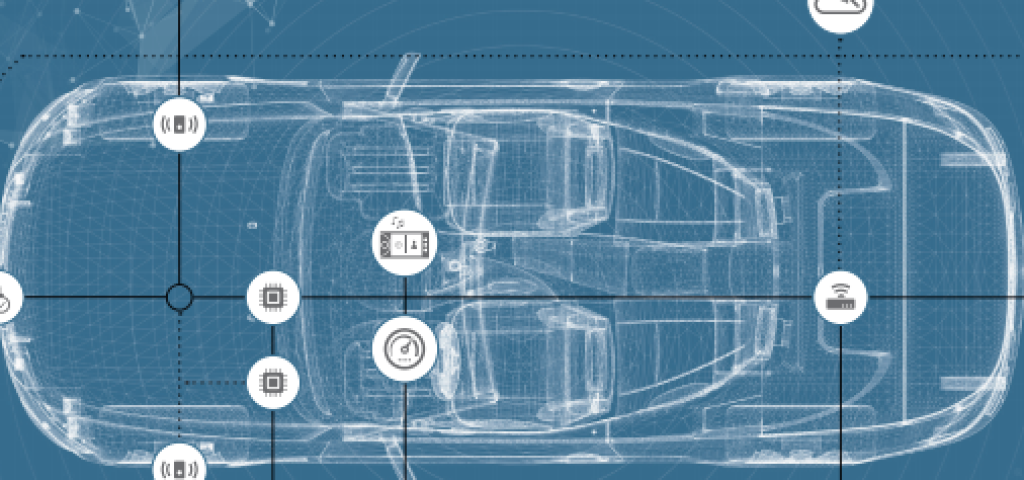In the tech-driven era, Wind River Linux emerges as a transformative force, not just behind mainstream services but at the core of electric-powered cars. As a prominent commercial embedded Linux developer based in Alameda, Calif., Wind River Linux is redefining the landscape for software-defined vehicles, facilitating digital transformation across diverse industries, including automotive, aerospace, defense, industrial, medical, and telecommunications.
 The Significance of Linux in Automotive Innovation:
The Significance of Linux in Automotive Innovation:
While Linux might not be a household name for mainstream consumers, Wind River Linux is actively shaping the future of electric vehicles (EVs). Avijit Sinha, Chief Product Officer at Wind River, highlights the pivotal role of software in the automotive industry, emphasizing how Linux software introduces new possibilities for both car manufacturers and consumers.
Empowering Automotive Innovators with AI Integration:
Wind River Linux proves instrumental in empowering automotive innovators to embrace modernized development frameworks, leveraging cloud-based AI and edge computing. By offering software lifecycle management capabilities, it accelerates innovation in the automotive sector, propelling the realization of software-defined vehicles.
Strategic Partnerships with Chinese EV Manufacturers:
In a strategic move, Wind River recently collaborated with Chinese electric vehicle manufacturers, Zeekr and Hozon, to integrate innovative Linux technology. Zeekr, with its sustainable experience architecture, and Hozon, focusing on intelligent security vehicle platforms, aim to leverage Linux to compete with established gas-engine auto manufacturers in Europe and North America.
 Zeekr’s Vision and Integration of Wind River Linux:
Zeekr’s Vision and Integration of Wind River Linux:
Zeekr’s commitment to creating a fully integrated user ecosystem aligns with Wind River Linux’s capabilities. The partnership involves integrating Wind River Linux into Zeekr’s Electronic and Electrical Architecture (ZEEA) platform, actively contributing to the development of software-defined vehicles.
Hozon’s Automotive Intelligent Security Vehicle Platform:
Hozon’s collaboration with Wind River focuses on the development of the Hozon Automotive Intelligent Security Vehicle Platform, set to go into production in 2025. This platform integrates open-source frameworks and tools, showcasing the commitment to rapid software application development and deployment.
Advantages of Wind River Linux in EV Technology:
Avijit Sinha emphasizes the unique attributes of Wind River’s Linux platform, designed specifically for non-IT use cases with a strong emphasis on industrial application and development. This sets it apart from traditional offerings, ensuring reliability, security, and customization for specific industry needs.
Commitment to Open Source Collaboration:
In the dynamic realm of technology, Wind River exemplifies a steadfast commitment to open-source collaboration, transcending conventional boundaries to foster innovation and drive progress. As a founding member of the Yocto Project and an active participant in the ELISA project under The Linux Foundation, Wind River stands as a beacon of open-source dedication, contributing significantly to the evolution of software-defined solutions and reinforcing the principles of transparency, accessibility, and community-driven development.
Founding Principles of Open Source Advocacy:
Wind River’s journey in open-source collaboration is deeply rooted in the founding principles of the Yocto Project. This collaborative initiative, organized as a non-profit under The Linux Foundation, empowers developers to create customized Linux-based systems across diverse hardware architectures. Wind River’s early involvement signifies a commitment to democratizing technology and providing a platform where innovation knows no bounds.
Active Engagement with ELISA Project:
The participation in the ELISA project, focused on Enabling Linux In Safety Applications, underscores Wind River’s strategic alignment with ensuring the safety, security, and reliability of open-source technologies. By closely monitoring embedded Linux use in safety-critical applications, Wind River contributes valuable insights and expertise, playing a crucial role in shaping the landscape of safety-conscious software development.

Ensuring Security, Safety, and Reliability Across Industries:
Wind River Linux isn’t merely confined to the automotive sector; its impact reverberates across diverse industries. Avijit Sinha, Chief Product Officer at Wind River, highlights the software’s role in ensuring security and reliability for billions of devices, spanning applications from collaborative robots and commercial drones to connected cars and intelligent communication networks. This adaptability showcases the robustness of Wind River’s open-source solutions in meeting the stringent demands of various sectors.
Collaborative Spirit for Customization and Support:
What sets Wind River apart is its unwavering focus on non-IT use cases with a strong emphasis on application and development for industrial purposes. Avijit Sinha emphasizes that Wind River’s experience in more demanding markets allows it to differentiate from traditional offerings that may fall short. The company’s commitment extends beyond providing a one-size-fits-all solution, with a dedicated services team boasting extensive experience in customization and support tailored to meet the specific needs of its diverse clientele.
Contribution to Transformative Projects:
Wind River’s impact transcends the realm of open-source collaboration, leaving an indelible mark on transformative projects. From playing pivotal roles in NASA space missions, including Artemis I and the James Webb Space Telescope, to contributing to pioneering work in 5G technology, Wind River’s technology has been instrumental in pushing the boundaries of what is possible. This legacy of innovation spans over four decades, reflecting a continuous commitment to advancing technological frontiers.
Empowering the New Intelligent Machine Economy:
As industries embark on the journey towards the new intelligent machine economy, Wind River remains at the forefront, offering solutions that go beyond conventional expectations. By actively contributing to open-source initiatives, Wind River envisions a future where collaborative innovation becomes the driving force behind groundbreaking advancements in technology. This commitment aligns seamlessly with the broader ethos of open-source communities, where knowledge-sharing and collective progress take precedence.
Wind River’s Impact Beyond Automotive:
Beyond the automotive sector, Wind River’s technology has left an indelible mark on groundbreaking projects, including NASA space missions like Artemis I and the James Webb Space Telescope. It has also played a key role in advancing 5G technology, showcasing its versatility and innovation spanning over four decades.
In conclusion
Wind River Linux stands at the forefront of revolutionizing software for electric vehicles, paving the way for software-defined automotive advancements and contributing to transformative projects across diverse industries.
Read more: